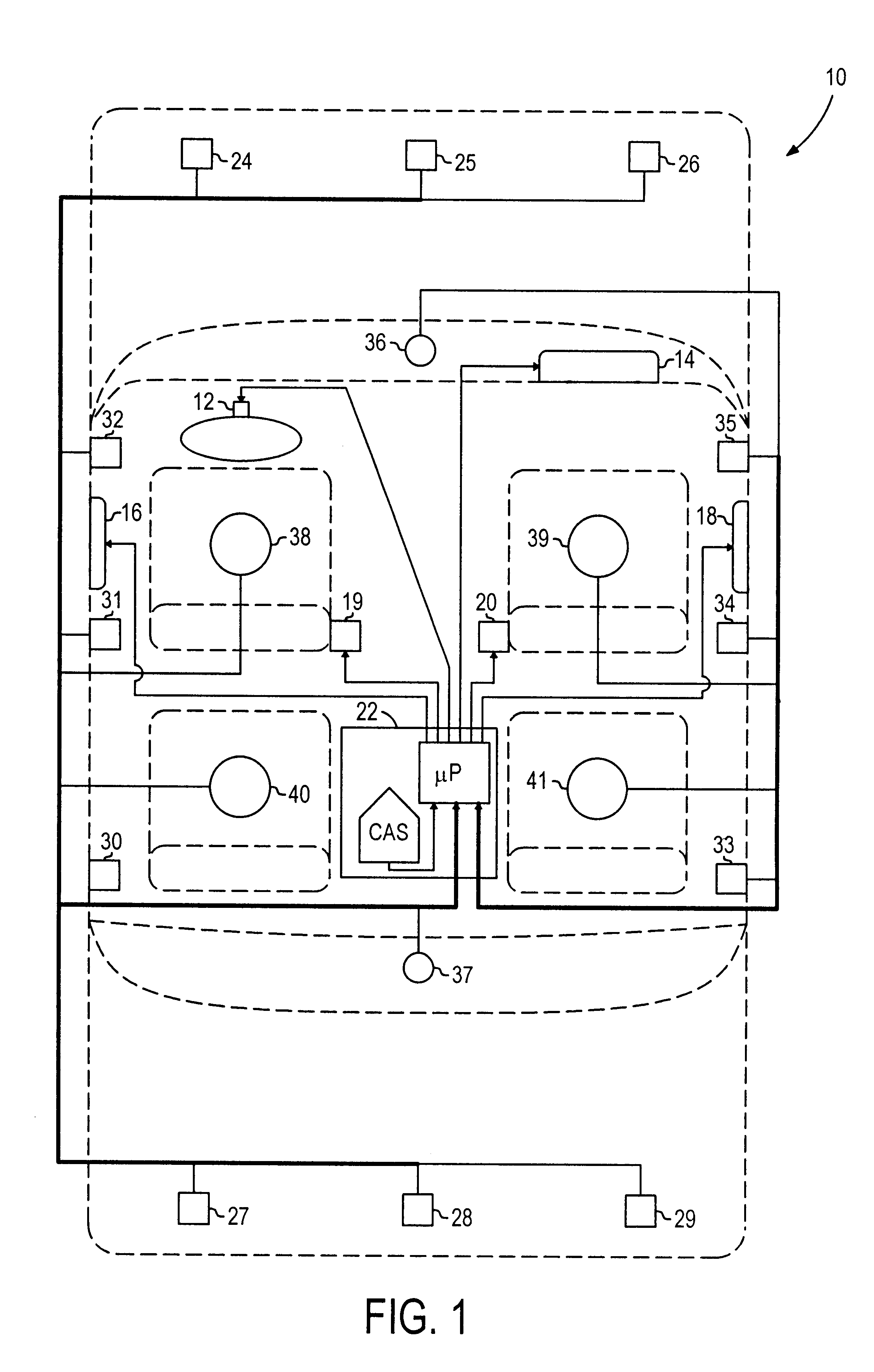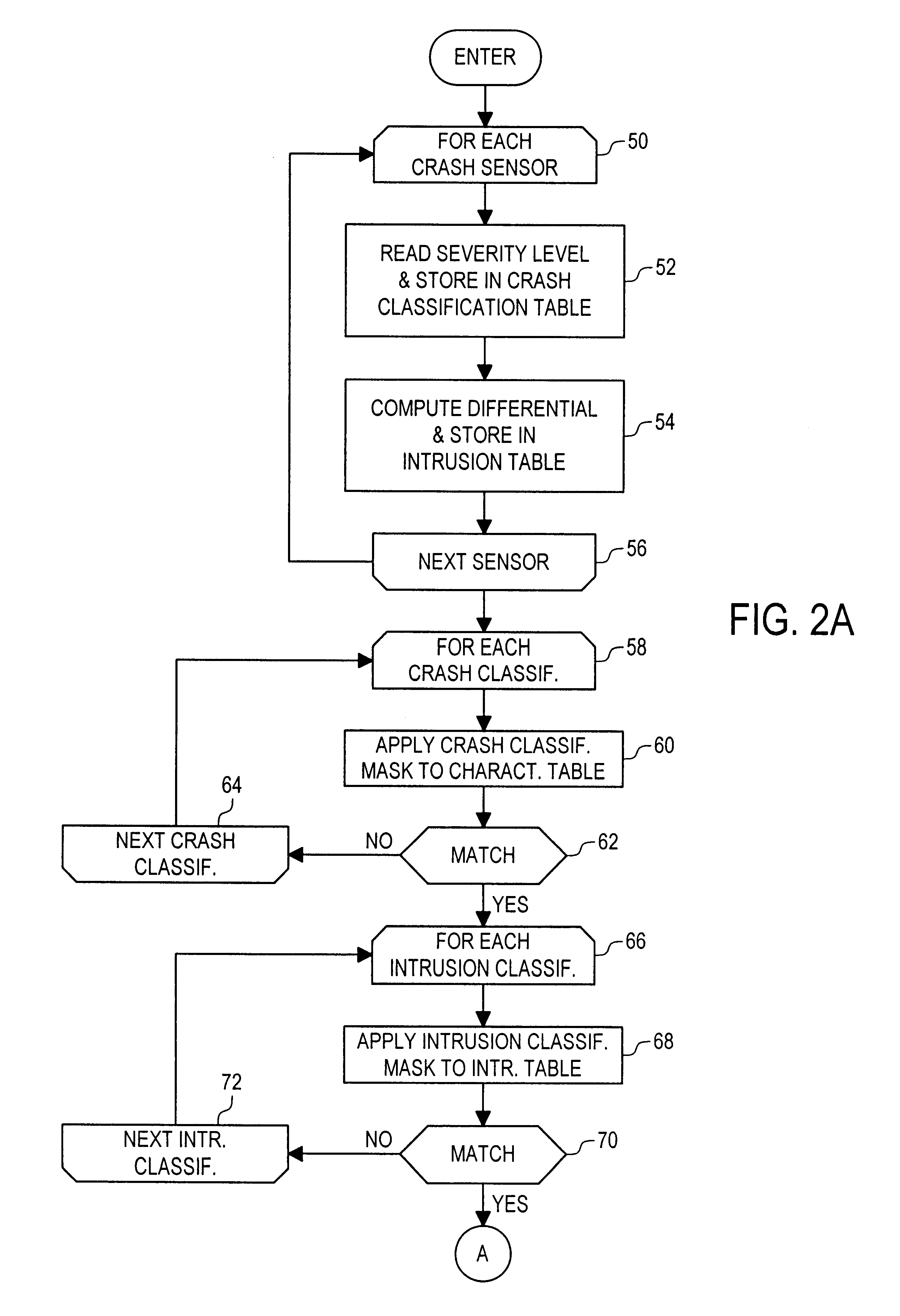Crash classification method and apparatus using multiple point crash sensing
a classification method and multiple point technology, applied in the direction of pedestrian/occupant safety arrangements, instruments, tractors, etc., can solve the problem of lack of rigorous and universally applicable methodology
- Summary
- Abstract
- Description
- Claims
- Application Information
AI Technical Summary
Benefits of technology
Problems solved by technology
Method used
Image
Examples
Embodiment Construction
[0008]Referring to FIG. 1, the reference numeral 10 generally designates a vehicle supplemental restraint system including multiple supplemental restraints 12, 14, 16, 18, 19, 20, a centrally located controller 22 having microprocessor uP for deploying one or more of the restraints in a severe crash event to protect the vehicle occupants, and multiple remote or satellite sensors 24-35 located about the periphery of the vehicle for sensing vehicle deceleration and providing corresponding crash data to the microprocessor uP of central controller 22. The restraints may include without limitation, front air bags 12, 14, side restraints 16, 18 and seat belt pretensioners 19, 20. In the illustrated embodiment, it is assumed that the front air bags 12, 14 have low and high energy inflation levels, and that the side restraints 16, 18 include a thorax air bag and a side curtain. Of course, similar restraints may also be provided for the rear seat passengers. Other types of restraints such as...
PUM
 Login to View More
Login to View More Abstract
Description
Claims
Application Information
 Login to View More
Login to View More - R&D
- Intellectual Property
- Life Sciences
- Materials
- Tech Scout
- Unparalleled Data Quality
- Higher Quality Content
- 60% Fewer Hallucinations
Browse by: Latest US Patents, China's latest patents, Technical Efficacy Thesaurus, Application Domain, Technology Topic, Popular Technical Reports.
© 2025 PatSnap. All rights reserved.Legal|Privacy policy|Modern Slavery Act Transparency Statement|Sitemap|About US| Contact US: help@patsnap.com



